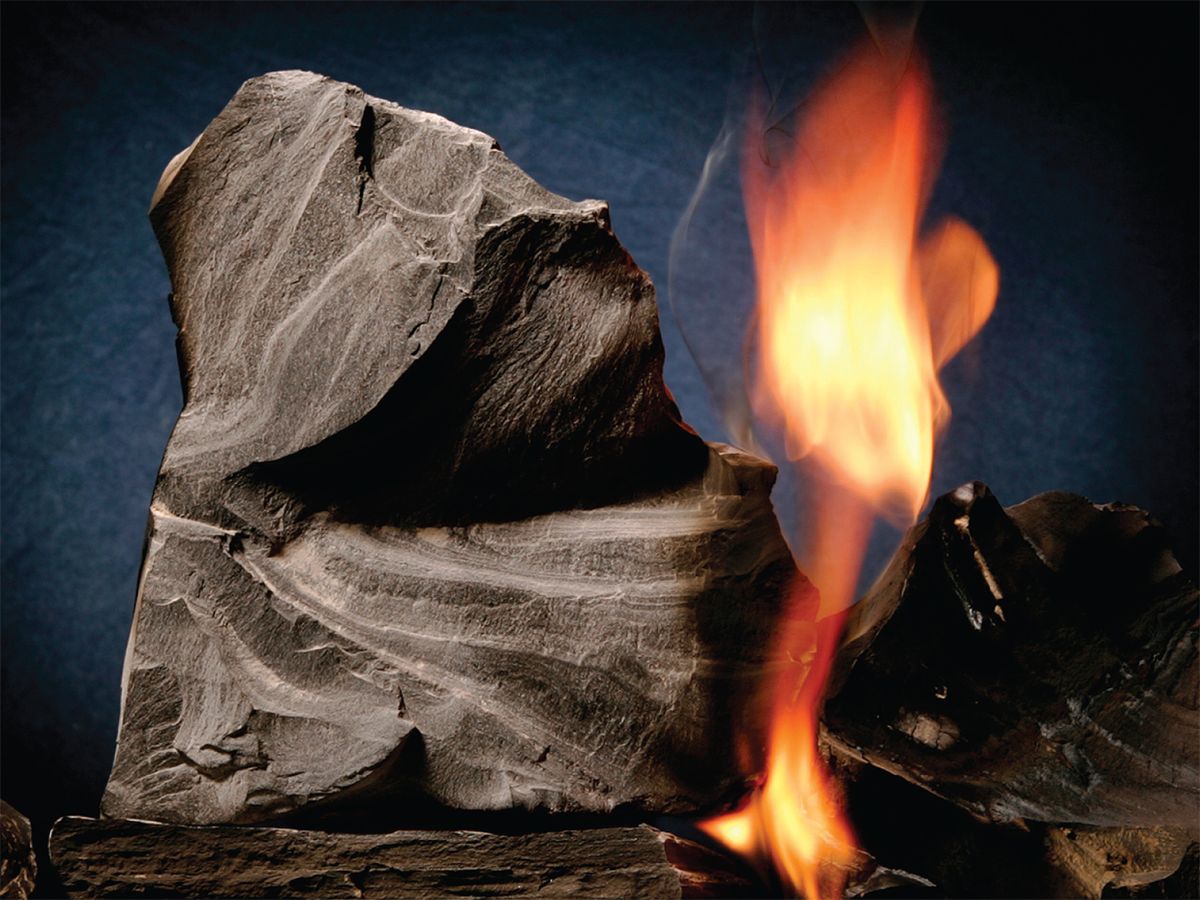The Baltic state of Estonia has cultivated a sophisticated and wired image ever since the Soviet Union broke up over a decade ago—laptops are everywhere, Wi-Fi availability is commonplace, and the country is, after all, the home of Skype.
But this broadband brain is fed by a Victorian belly. The national fuel is a pale brown stone called oil shale. Estonia burns it for electricity in two massive, Soviet-era power plants located in the border town of Narva, cheek by jowl with Russia. One of the twin Narva plants still sports a 15-meter-tall Soviet hammer and sickle on its brick face.
According to Dmitri Lipatov, the plant’s deputy manager, shale supplies between 70 percent and 90 percent of the country’s electricity. This is the only place in the world where “fire rock,” as it’s known locally, is responsible for supplying such a large portion of a nation’s power.
Because of oil dependence and climate change, a global push for energy alternatives is on like never before. Oil shale of the kind found in Estonia, formed by ancient algae compressed over time, is one possible alternative fuel: upon extraction, it can be pulverized and burned like coal to drive electric generators. Some day, indeed, the new oil shale technology coming online here could help other countries reduce their energy dependency at an acceptable environmental cost. But the fuel’s recent history in Estonia, to be frank, is about as dirty as it gets.

As you drive east from Tallinn along the Gulf of Finland, just before the Narva plants’ 250-meter chimneys thrust up over the horizon, dusty slag mesas start to loom off the side of the road, nearly 100 meters high. Every year the burned shale produces some 5 million metric tons of ash, which is collected and piled up behind a pale 30-meter-high levee about 1.5 kilometers from the plants. Water is used to pump the ash into the inexorably growing field, so a copper-alkaline wastewater and rain pond floats atop it: it’s a surreal, brilliant blue-green chemical Caribbean, full of potassium, sulfate, hydroxide, and zinc [see photo, "No Fishing"].
That’s not all. Burning the shale also creates tons of small airborne particles laced with heavy metals. Also going into the air are nitrogen oxides, a potent greenhouse gas, and sulfur dioxide, which causes acid rain. Last year the Narva plants spewed close to 10 million metric tons of carbon dioxide and gave off enough of the other pollutants to match the emissions from Finland’s entire energy sector. And that’s an improvement—during the Soviet era, the plants’ emissions were three times as high.
One answer to this environmental nightmare would be to simply shut down the plants and import power from Russia or Germany. But state-owned Eesti Energia, in Tallinn, having metamorphosed from its sleepy old Soviet-era self into an up-and-coming regional player, thinks it can put a clean new shine on this rusty technology.
In the Eesti plant, there are now eight 200-megawatt power units. Built in St. Petersburg’s Leningrad Metal Works and stenciled with Cyrillic characters, each unit looks like an overgrown car battery. Lipatov goes to unit No. 8 and points to a towering tangle of shiny pipes. Stretching far upward is the first of what will be 16 new circulating fluidized-bed boilers, two to a unit, which drastically reduce emissions from burning oil shale. The technology was first developed by Finland’s subsidiary of Foster Wheeler, based in Clinton, N.J., 25 years ago. Now it is possible to deploy it in the huge sizes needed at the Eesti station, delivering much more efficient power generation and yielding fuel cost savings of 20 percent.
Shale crushed into 6- to 10-millimeter particles is fed into the bottom of the furnace, and as the mixture burns, it is blown upward by air nozzles at a steady rate until it exits the furnace into a “cyclone,” which catches the larger unburned particles and sends them back down into the furnace—a circulating loop. Because of this recycling through the boiler, combustion can be kept at lower, much more even temperatures, reducing the amount of ash and emissions. Unit No. 8 also has more efficient electrostatic precipitator filters.
Foster Wheeler overhauled the unit and one other at a cost of US $325 million. It still makes the same roar as its neighbors, but Lipatov points to nearby gauges which show sulfur dioxide emissions at zero and nitrous oxide emissions at 110 milligrams per cubic meter of ambient air, well under the European Union limit of 200 milligrams per cubic meter.
This is not by any means environmental perfection. Eesti Energia has to pay $20 million in variances and pollution fines every year. There’s still the matter of fixing the ash pool, which is planned for the next three years, using new disposal technology. And as a new member of the EU, Estonia soon will have to come into compliance with tougher environmental rules, which will not be easy.
The Eesti story does show, however, what some basic investment and long-term thinking can do. “There is a lack of energy in this region and a growth in power demand,” Eesti director Ilmar Petersen says. “This is an independent energy source: we must be happy we have this source here, and we’re much more interested to use it than look somewhere else.”
